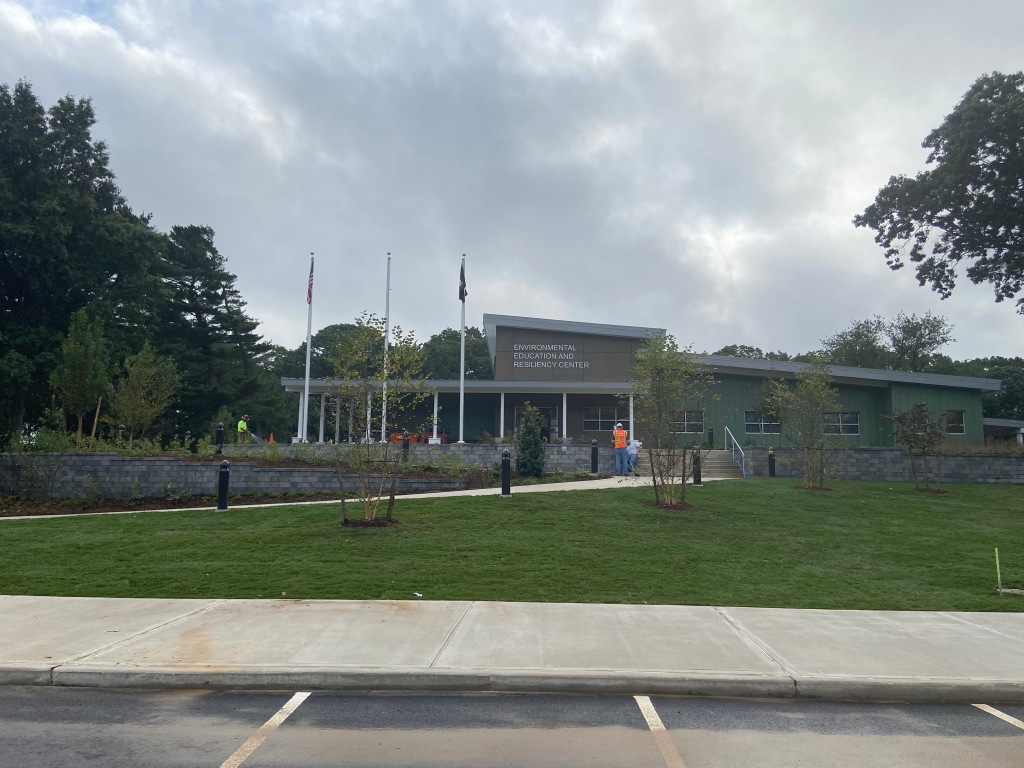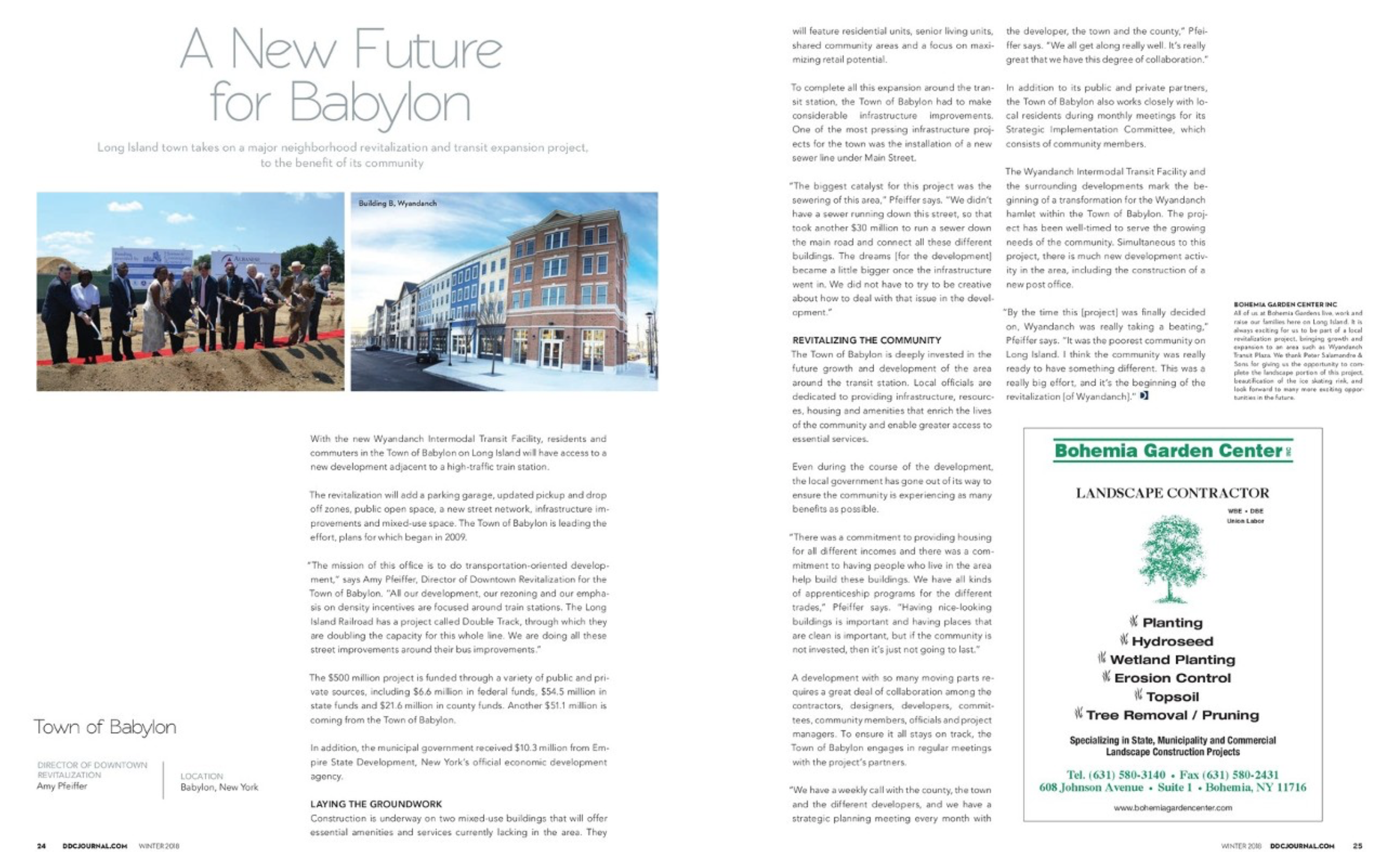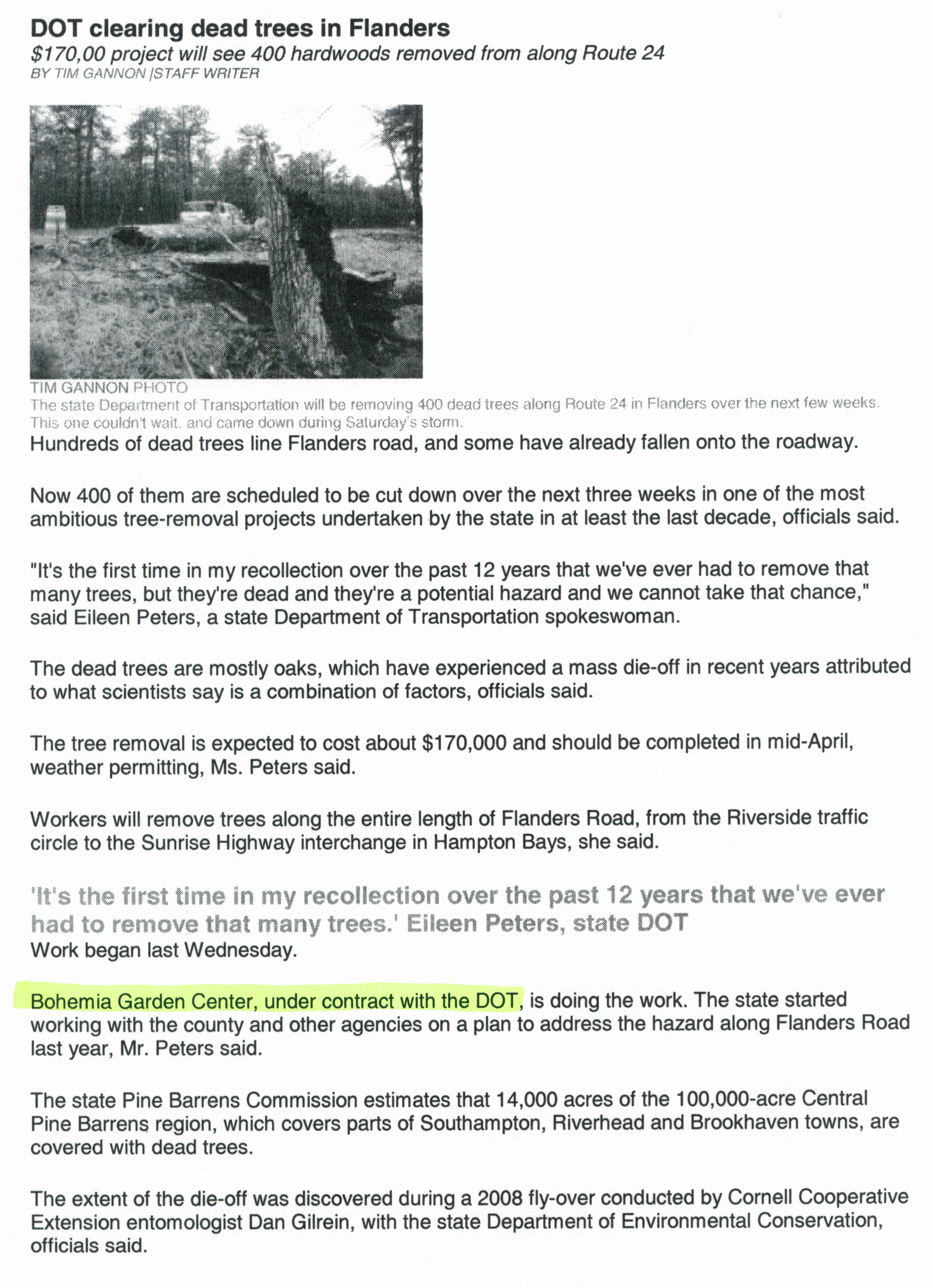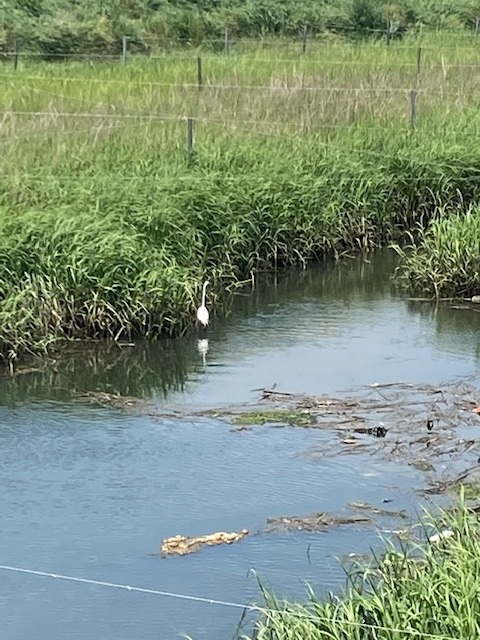Two years after installation
Author: bohemiagc
Planting at the Environmental Center

Highway Turf Restoration
Drone Footage Credit: Pratt Brothers, Inc
“Breaking the Grass Ceiling”
This article was reprinted with permission of New York Landscape Contractor, a publication of G.E.S. Publishing Services, Inc.
Please click here to be re-directed to our most recent featured article.

“A New Future for Babylon”
Bohemia Garden Center, Inc. was recently featured in the Winter 2018 Edition of Design, Develop & Construct Journal

“Ocean Parkway dunes get beach grass from far and wide”
“Crew members from Bohemia Garden Centers, a subcontractor of Bove Industries, John P. Picone, and Tully Construction, the NYS based Tri-Venture, manually plant American Beach Grass to restore the dunes as part of the Ocean Parkway and Robert Moses Traffic Circle Emergency Repairs. (March 15, 2013) Photo Credit: Steve Pfost”
“The search for beach grass to stabilize Sandy-ravaged dunes along Ocean Parkway led far from the sea.
Donna DeFede, president of a Ronkonkoma landscaping company hired as a subcontractor on the project, had to search as far away as Michigan and Indiana to find 1.2 million plugs of American beachgrass needed to stabilize almost 5 miles of newly formed dunes along the parkway east of Jones Beach.
A crew of about 10 people working for the company, Bohemia Garden Center, has spent the past three weeks in snow, ice, driving rain and gale-force winds planting more than 300,000 plugs of the dormant grasses about 3 inches into the new dunes.
Once in, warming weather, the climbing arc of the sun and a kick-starting dose of fertilizer will get the grass going, said Michael Kelly, a supervisor for the garden center.
“In a few weeks, you’re going to see green shoots coming up through the top of these,” said Kelly, clutching a fistful of seemingly dead grasses at the dunes near West Gilgo.
The work is part of a $33.2-million project — most of which must be completed by April 24 to qualify for full federal reimbursement. Sandy decimated sections of the dunes and damaged about 2 miles of road eastbound on the parkway. The Oct. 29 storm also badly eroded the nearby Robert Moses traffic circle and ripped away dunes of the beach nearby.
As workers plant grasses by hand at the western end of the damaged stretch of parkway, heavy machinery and high-tech equipment work on the rest.
Norfolk Dredging has pumped more than 620,000 cubic yards of sand from the edges of Fire Island Inlet to the beach east of Gilgo. Off-road trucks carry the sand west, where front-end loaders, bulldozers and excavators guided by GPS fashion new dunes.
GPS technology also guides the dredge as it chews its way across the sand-clogged inlet at Democrats Point on Fire Island’s western tip, removing sand up to a depth of 16 feet — a move welcomed by local boat owners and fishermen.
Dredge operators last week started extracting the last 45,000 cubic yards of sand needed to rebuild the Robert Moses beach in front of the undermined traffic circle.
“The grains are the perfect coarseness for what’s needed on the beach,” said Norfolk vice president Stephen Newton.
Back on the beach, the Bohemia crew is also laying dried straw mats for erosion control on the roadside of the dunes. Topsoil is being sprayed on top of the mats from a 100-foot-long telescopic conveyor belt mounted on an 18-wheeler.
Once all 1.2 million grass plugs are in, other native woody shrubs — pitch pine, bayberry, beach plum, Rosa rugosa and juniper — will be planted to further stabilize the side of the dunes closest to the road.
The work is personal for Colleen Frazzetta of Amity Harbor. The Great South Bay flooded her home with 6 feet of saltwater during Sandy and it remains uninhabitable.
“I’m still out of my house,” Frazzetta said as she helped dig a trench and lay straw matting. “But with this job, I like to think I’m kind of helping all the storm victims, myself included.””
“2003 NewYork Magazine Smart City- Best of New York Dog Run”
We installed the tree pictured below at the Thomas F. Smith Park in Manhattan to be used as a dog walk. This tree was cured for a year, treated and then shipped off to Manhattan.


“2008-2009 NYSDOT Prime Contractor of the Year”
“In recognition of outstanding performance, achievement and valuable contribution, not only as a Disadvantaged Business Enterprise subcontractor, but as a Prime Contractor as well. Far and away the best prize that life has to offer is the chance to work hard at work worth doing. Thank you for a job well done”

“Tree Removal Helps Restoration Projects”

DOT Clearing Article


